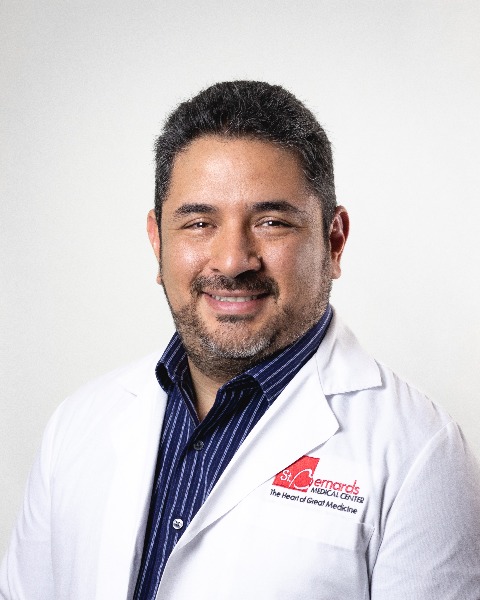Global Neonatal & Children's Health
Session: Global Neonatal & Children's Health 1
486 - The RCPNEOPERU Trial: A cluster randomised pilot trial to assess traditional neonatal resuscitation compared to partially virtual training in remote areas
Friday, May 3, 2024
5:15 PM - 7:15 PM ET
Poster Number: 486
Publication Number: 486.543
Publication Number: 486.543

Enrique Gomez, MD, MSc
Assistant Professor of Pediatrics
University of Kentucky College of Medicine
Jonesboro, Arkansas, United States
Presenting Author(s)
Background: Neonatal mortality rates in Peru have decreased dramatically in the last two decades; however, unacceptable gaps between the poorest and wealthiest quintiles remain (14.7 vs 7.6 deaths per 1000 live births). Neonatal asphyxia accounts for more than 20% of these deaths. Adequate neonatal resuscitation at birth saves lives; yet it currently requires in-person training (TT) which is challenging in remote areas.
Objective: To assess the outcomes of a new partially distance-learning training compared to traditional in-person training for neonatal resuscitation in remote, rural areas.
Design/Methods: A partially distance-learning training course (pDL) was designed. The pDL course includes distance learning (theory and evaluation done in an electronic tablet with saved files) and in-person practice; instead to TT which consist of in-person theory, evaluation, and practice. A randomized cluster trial of 12 health facilities in remote areas of Peru was designed. The units of study were the health facilities to minimize the risk of contamination between pDL and TT groups. Facilities were matched by the proportion of non-medical professionals (nurses and obstetricians) and the availability of maternal/newborn care supplies and equipment to ensure comparability. Blocked randomization was used to allocate health facilities, 6 in each group. Primary outcome was heart rate at 2 minutes of life (HR2M) assessed by two methods, direct auscultation/palpation and by pulse oximeter (when available).
Results: A total of 403 health professionals (doctors, nurses, midwives, and nurse technicians) were trained. Six months later, 2180 births were assessed, 966 and 1214 newborns in the TT and the pDL group respectively. Mean birth weight and gestational age were not significantly different between both groups. Newborns were categorized as healthy (term with weight appropriate for gestational age) and vulnerable (preterm or low birthweight or small for gestational age) for comparison. There were no statistically significant differences between groups for sex, weight, and gestational age (Table 1). The outcome of interest, HR2M, was non-different between groups (Figure 1). Secondary outcomes are shown in Table 2 and were similar between the control (TT) and the intervention (pDL) groups.
Conclusion(s): Training in neonatal resuscitation in a country with diverse geography and difficult access like Peru requires innovative strategies. A partially distance-learning course paired with in-person practice offers similar results to traditional in-person training for neonatal resuscitation.
